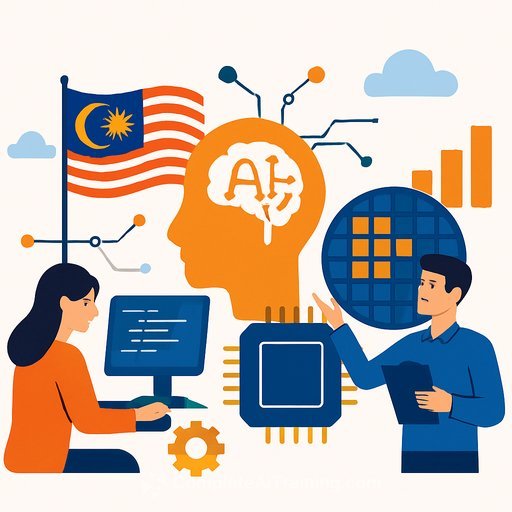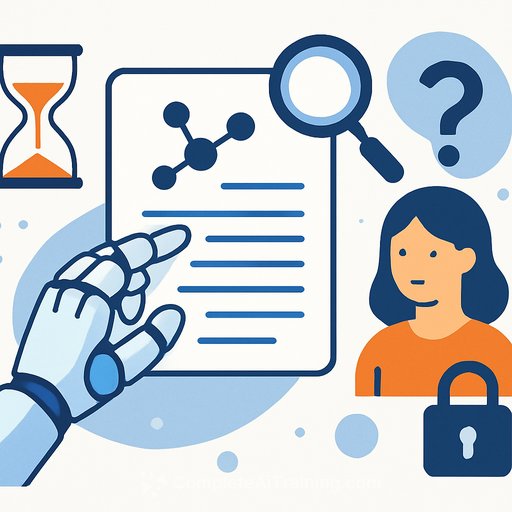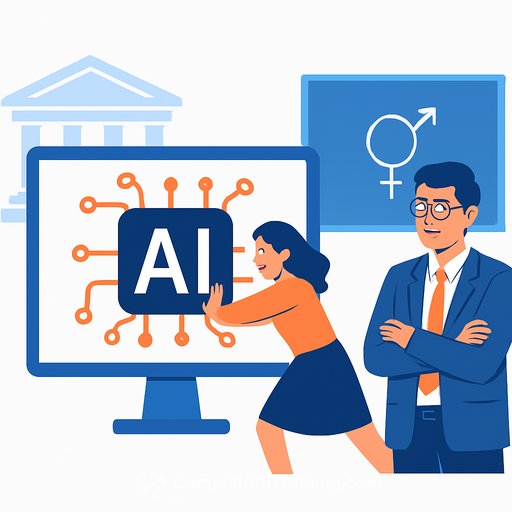Malaysia's AI 2030 goal is at risk as STEM interest fades, academics warn
Malaysia wants to lead in AI by 2030. Two academics say the plan will stall unless the country fixes a deeper issue: fewer students are choosing science, technology, engineering and mathematics (STEM).
USM's Selvakumar Manickam put it plainly: "A strong STEM foundation is critical in preparing the next generation for an AI-driven future." Without it, the talent pipeline runs dry. He cautioned that the 2030 target "may be overly ambitious given our current capacities."
Universities can use AI - but must learn to build it
Selvakumar said public universities have advanced in teaching and applying AI. The gap is in homegrown innovation. "Our universities are proficient at using existing AI tools, but we must also learn to build our own."
This shift - from user to creator - requires deeper maths, data, and systems knowledge, not just tool familiarity. That starts in school, not in capstone year.
Start earlier: the critical school-level bottleneck
UPM's Azizol Abdullah agreed the choke point is before university. "At the university level, STEM education is manageable. The real challenge is at the school level. We need to attract students to STEM much earlier."
Interest formed by age 13-15 often decides if students take physics, additional mathematics, and later E&E, data, or computing. Miss that window, and the 2030 target slips.
The numbers: demand outpaces supply
- Two Penang public universities (USM, UiTM Permatang Pauh) reported fewer than 1,000 E&E students combined last year, below capacity.
- Across 16 public universities, about 18,000 students are in E&E-related courses. Industry players say this needs to double by 2030.
- There is a shortage of 50,000 engineers in E&E. Local universities produce roughly 5,000 engineering graduates a year.
- Factories report hiring difficulties, signaling an acute talent crunch.
Budget 2026: strong signals, execution will decide
The government framed AI as a growth engine. Key allocations include RM5.9 billion for research and innovation, RM2 billion for a Sovereign AI Cloud to secure national data, and RM15 million for programs like Malaysia Techlympics and National Science Week to boost interest in science.
The plan also strengthens the National Artificial Intelligence Office and backs universities in semiconductors, medicine, cryptology, and digital tech. Policy is pointing the right way; delivery now depends on talent.
Ministry of Finance Budget Portal
What to do next: practical moves for education leaders
- Lock in early maths and physics: Ensure all students aiming for tech fields take additional mathematics and physics by upper secondary. Track enrollments as a KPI at district and state levels.
- Make STEM "visible" in schools: Run term-based engineering design challenges tied to local industry problems. Use low-cost kits and publish school leaderboards to create momentum.
- Teacher capability first: Fund intensive upskilling for science and maths teachers in data literacy, Python basics, electronics, and project-based assessment. Pair with micro-credentials that carry promotion value.
- Guaranteed industry exposure: Require every E&E and computing student to complete a paid 12-16 week placement. Incentivize SMEs with wage co-funding; publish placement rates by university.
- Targeted scholarships and bonds: Offer bonded scholarships for E&E, semiconductor process, embedded systems, and AI systems engineering. Tie bond to local fabs and design houses.
- Modern labs, shared access: Equip regional hubs with electronics benches, FPGA boards, GPUs, and measurement tools. Share access across nearby schools and polytechnics to maximize usage.
- Admissions that reward rigor: Give admissions weighting for physics + additional mathematics, Olympiad participation, and project portfolios. Signal what matters.
- Bridge programs: Run 8-12 week maths refreshers and coding bootcamps before first year to reduce dropout and raise first-year pass rates.
- Faculty-industry co-teaching: Bring practicing engineers into core courses (signals, VLSI, control, networks). Rotate them each term to keep content aligned with factory floors.
- Public dashboards: Report quarterly on STEM enrollments, E&E intake, graduate output, placement rates, and time-to-hire. What gets measured gets fixed.
University priorities for AI creation, not just consumption
- Deepen math-first curricula: Linear algebra, probability, optimization, and numerical methods across all AI-facing degrees.
- Systems work over demos: Projects must ship to real users - embedded inference on devices, fab process optimization, hospital triage support, secure data pipelines.
- Compute and data access: Pooled GPU clusters, synthetic data pipelines, and privacy-preserving data sharing with healthcare and manufacturing partners.
- Local problems, local languages: Build models and tools that serve Bahasa Malaysia and local dialects, and solve factory yield, agriculture, and logistics constraints.
What success by 2030 should look like
- E&E and computing enrollments doubled; at least 10,000 engineers graduating per year.
- Placement rate above 90% within three months; median time-to-hire under 30 days.
- More women in E&E and AI programs, aiming for 40% participation.
- Multiple university-led AI systems deployed in healthcare, semiconductors, and public services.
- Faster patent filings and industry co-authored publications tied to real deployments.
Bottom line
Budgets and cloud infrastructure help. But without a stronger STEM pipeline - starting in school - Malaysia will struggle to meet its AI ambition. The fix is clear: earlier exposure, better teachers, industry-linked learning, and consistent measurement.
References and further reading
Upskill your team
If you lead curriculum or research teams and need structured AI upskilling, explore role-based programs here: Complete AI Training - Courses by Job.
Your membership also unlocks:










